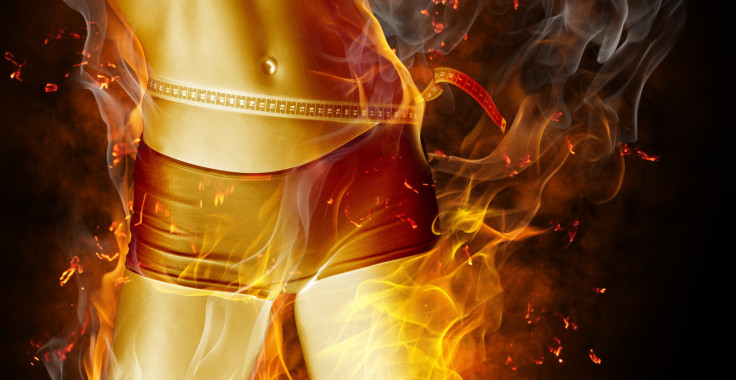Burn Victims Show How Stress Can Convert Bad Fats Into Calorie-Burning Good Fat

Aside from exercise, intense stress is the switch the body needs to convert bad fat into good fat. Researchers at the University of Texas Medical Branch at Galveston studied how fat functioned in animals and, as a result, were able to create a calorie-burning fat. After recreating the experiment in humans, they published their findings in the journal Cell Metabolism, proving for the first time that converting bad fat into good fat is possible.
Years ago, researchers peered through the lens of a microscope and discovered there were two different types of fat cells in the body — brown and white. Brown fat, named for its darker coloring, contains large mitochondria, the heat-burning engine of the cell designed to burn calories. The younger and more in shape a person is, the higher levels of brown fat they have, which helps to keep their blood-sugar levels stable and balanced.
White fat has far less mitochondria because it serves as energy storage in the body. Estrogen, stress hormones, and hunger hormones are produced in white fat. When you exercise, brown fat works to convert white fat into more brown fat, and researchers demonstrated how to control the conversion without exercise. However, the switch is only possible when a steady production of stress-induced adrenaline is released.
Researchers found burn trauma was able to achieve the levels of severe and prolonged stress needed to release enough adrenaline in the weeks following the initial burn, leading them to study 72 patients who had sustained severe burns over more than 50 percent of their bodies.
Samples of white fat were taken from the patients at different points following their initial burns. Researchers then measured the makeup of the fat cells and the patients' metabolic rates, and found over time their white fat was converting to brown fat in response to the burn.
Last year, scientists at Yale School of Medicine published a study in the journal Cell, reporting the same browning fat phenomenon, except in mice models. Their bodies were placed under intense stress in the form of fasting. It resembled starvation and scientists were able to prove that “hunger itself is a signal that controls the browning of white fat, so the brain can actually control the browning of white fat,” said the study’s co-author Xiaoyong Yang, a professor of comparative medicine at Yale.
Understanding the brain can send signals to convert white fat to brown fat gave researchers at the University of Texas the opportunity to test different signal switches in the brain. Obese people lose their response to hunger, so while there is plenty of food and energy stored within the body, the hunger brain cells in the body send false messages that tell the body it needs to conserve energy and not burn it. Being able to take control of obese people’s brains and turn on the correct energy-burning signals may be able to help treat the 78.6 million obese adults in America today by manipulating their brains.
“Our study provides proof of concept that browning of white fat is possible in humans,” said the study’s lead researcher Ladros Sidossis, a professor at the University of Texas Medical Branch, in a press release. The next step is to identify the mechanisms underpinning this effect, then to develop drugs that mimic the burn-induced effect.”
Source: Sidossis L, Port C, Manish K, et al. Browning of Subcutaneous White Adipose Tissue in Humans after Severe Adrenergic Stress. Cell Metabolism. 2015.
Yang X, Ruan H, Marcelo O, et al. O-GIcNAc Transferase Enables AgRP Neurons to Suppress Browning of White Fat. Cell. 2015.
Published by Medicaldaily.com



























